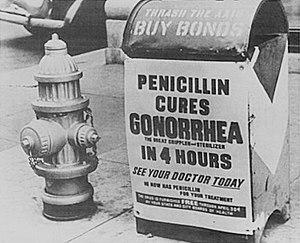3. Television
In 1884, Paul Nipkow sent images over wires using a rotating metal disk technology with 18 lines of resolution. Television then evolved along two paths, mechanical based on Nipkow’s rotating disks, and electronic based on the cathode ray tube. American Charles Jenkins and Scotsman John Baird followed the mechanical model while Philo Farnsworth, working independently in San Francisco, and Russian émigré Vladimir Zworkin, working for Westinghouse and later RCA, advanced the electronic model.
4. The Automobile
In 1769, the very first self-propelled road vehicle was invented by French mechanic, Nicolas Joseph Cugnot. However, it was a steam-powered model. In 1885, Karl Benz designed and built the world’s first practical automobile to be powered by an internal-combustion engine. In 1885, Gottlieb Daimler took the internal combustion engine a step further and patented what is generally recognized as the prototype of the modern gas engine and later built the world’s first four-wheeled motor vehicle.
5. The Cotton Gin
Eli Whitney patented the cotton gin on March 14, 1794. The cotton gin is a machine that separates seeds, hulls and other unwanted materials from cotton after it has been picked.
6. The Camera
In 1814, Joseph Nicéphore Niépce created the first photographic image with a camera obscura, however, the image required eight hours of light exposure and later faded. Louis-Jacques-Mandé Daguerre is considered the inventor of the first practical process of photography in 1837.
7. The Steam Engine
Thomas Savery was an English military engineer and inventor who in 1698, patented the first crude steam engine. Thomas Newcomen invented the atmospheric steam engine in 1712. James Watt improved Newcomen’s design and invented what is considered the first modern steam engine in 1765.
8. The Sewing Machine
The first functional sewing machine was invented by the French tailor, Barthelemy Thimonnier, in 1830. In 1834, Walter Hunt built America’s first (somewhat) successful sewing machine. Elias Howe patented the first lockstitch sewing machine in 1846. Isaac Singer invented the up-and-down motion mechanism. In 1857, James Gibbs patented the first chain-stitch single-thread sewing machine. Helen Augusta Blanchard patented the first zig-zag stitch machine in 1873.
9. The Light Bulb
Contrary to popular belief, Thomas Alva Edison didn’t “invent” the light bulb, but rather he improved upon a 50-year-old idea. In 1809, Humphry Davy, an English chemist, invented the first electric light. In 1878, Sir Joseph Wilson Swan, an English physicist, was the first person to invent a practical and longer-lasting electic lightbulb (13.5 hours) with a carbon fiber filament. In 1879, Thomas Alva Edison invented a carbon filament that burned for forty hours.
10. Penicillin
Penicillin was discovered by Alexander Fleming in 1928. Andrew Moyer patented the first method of industrial production of penicillin in 1948.

























0 comments:
Post a Comment